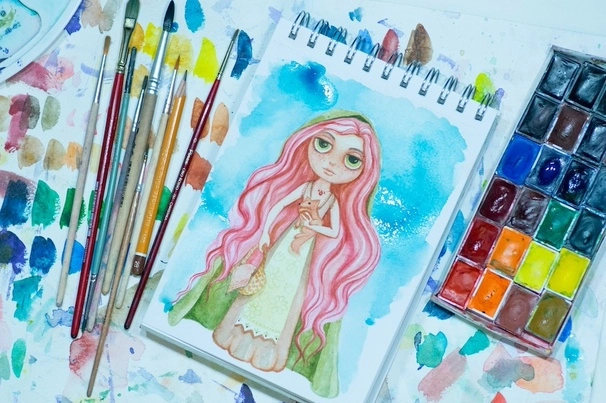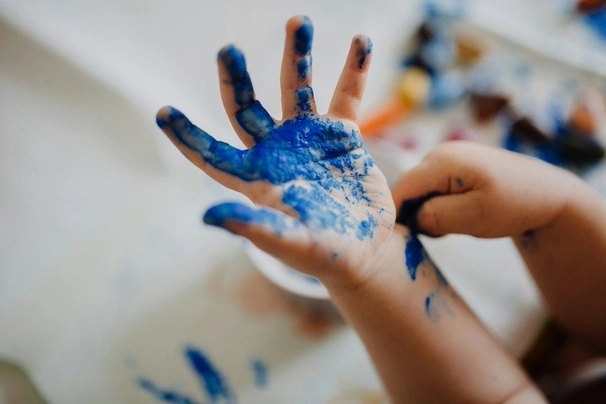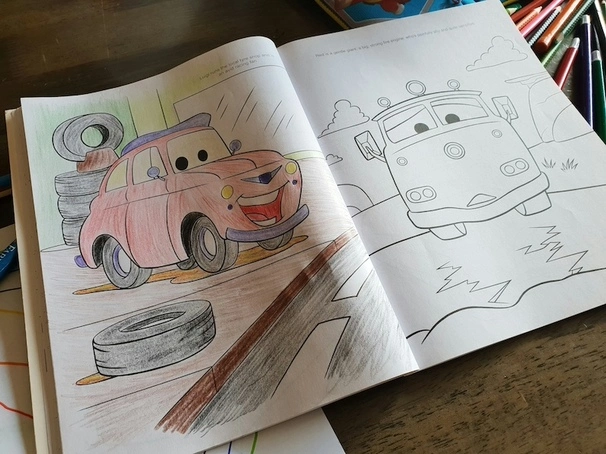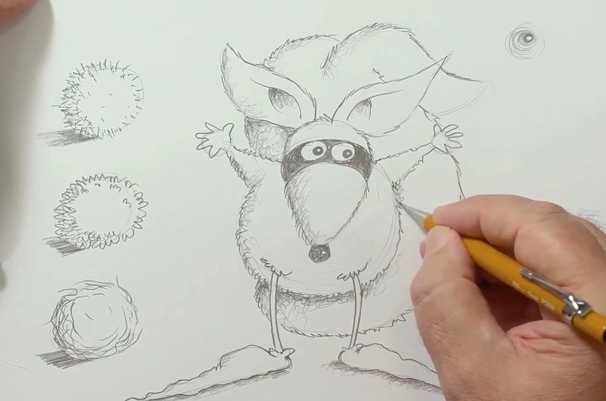
Drawing plays a crucial role in children’s physical and mental development. It serves as a fundamental tool for expression and learning. Research shows that engaging in drawing activities from an early age enhances fine motor skills. It also lays the groundwork for successful communication and problem-solving abilities later in life.
Drawing encourages children to observe their environment more closely. It helps to develop their attention to detail and awareness of the world around them. This creative activity supports emotional growth, and provides a safe outlet for expressing feelings and experiences they might not yet have the words to describe.
Studies have indicated that children who frequently draw show increased creativity and innovation. Both are highly valued traits in academic and real-world settings. By fostering a love for drawing, parents and educators can significantly contribute to the holistic development of a child by nurturing their cognitive, emotional, and physical growth.
Encouraging children to draw regularly can also promote a sense of accomplishment. It boosts their self-esteem as they see their skills improve over time. It’s a powerful reminder of the impact of creative activities like drawing on a child’s development. This underscores the importance of incorporating art into their daily routines.
Online art courses offer an accessible and flexible way to introduce children to the world of drawing. They provide structured guidance that can enhance their developmental benefits. These courses cater to various skill levels and interests, and ensure that every child can find a way to express themselves creatively while building essential skills.

Drawing offers more than just a way for children to express their creativity. It also provides significant physical benefits that contribute to their overall development. From enhancing fine motor skills to improving hand-eye coordination, let’s explore how the simple act of drawing can profoundly impact a child’s physical growth.
Drawing plays a pivotal role in developing children’s fine motor skills. When they hold pencils, crayons, or brushes, they are not just creating art. They also strengthen the small muscles in their hands and fingers. This muscle development is crucial for other daily activities, such as tying shoelaces, buttoning clothes, and writing.
Activities like tracing shapes, coloring within lines, and free drawing encourage children to use precise movements. This enhances their coordination and control. Research supports the idea that early engagement in drawing can predict better academic performance in areas that require fine motor precision, such as writing and math.
Hand-eye coordination is another significant benefit of drawing. It involves the ability of the visual system to coordinate the information received through the eyes to control, guide, and direct the hands in accomplishing a task. This skill is essential for various activities, from sports to everyday tasks like pouring a drink or using scissors.
Drawing requires children to look at what they are drawing and decide where to move their hands. This improves their visual analysis skills and precision. To boost hand-eye coordination through art, try activities that require children to replicate patterns, draw from life, or engage in dot-to-dot drawings.
These exercises improve their artistic ability and enhance their ability to analyze and interpret visual information. Those skills are beneficial for academic success and everyday life.

Drawing also profoundly impacts a child’s mental development. It nurtures the mind in complex and essential ways for growth. Here are the cognitive benefits that drawing brings to children.
Drawing unlocks creativity, giving children a canvas to express their thoughts, ideas, and dreams. It encourages divergent thinking, a key component in problem-solving and innovation. Kids learn to think creatively, and develop unique solutions to their challenges. This form of free expression allows them to explore possibilities without the fear of making mistakes. And this fosters a mindset that views challenges as opportunities for growth.
Before children can effectively use words to express themselves, they often turn to drawing as a form of communication. This pre-verbal expression of thoughts and emotions is a foundation for developing communication skills. Drawing provides a visual means to convey messages and stories. It helps the little ones articulate their feelings and ideas in a way that words sometimes cannot. Encouraging them to share and talk about their drawings can further enhance their verbal communication skills as they learn to connect their visual creations with spoken words.
Drawing activities require concentration and focus, which is beneficial for children’s cognitive development. As they immerse themselves in creating art, they learn to block out distractions and concentrate on the task. This improved attention span can translate to better performance in academic settings and other areas of life that require sustained focus.
Creating a conducive environment for art, free from interruptions, can help children develop their ability to concentrate. It also teaches them the value of dedicating time and attention to their endeavors.
Drawing also has significant therapeutic effects on children’s emotional health. When they draw, they engage in a process that allows them to express their feelings and thoughts nonverbally, relieving them from emotional turmoil.
Studies have shown that drawing can serve as a form of stress relief, helping kids to process and manage their emotions healthily. Simple drawing activities, such as doodling or coloring, can be particularly effective in calming anxiety and reducing stress. This makes art a valuable tool for emotional regulation.
Completing art projects gives children a sense of achievement, and it boosts their confidence and self-esteem. Creating something from their imagination and seeing the outcome of their efforts helps them recognize their abilities and value their unique creative expressions. Celebrating and displaying children’s artwork is a powerful way to reinforce a positive self-image.
It sends a message that their work is valued and appreciated. It encourages them to take pride in their creativity and accomplishments. This validation is crucial for their overall emotional development, fostering a healthy sense of self-worth and confidence that extends beyond the art room.
Making art a daily habit offers a world of benefits for children. It implements creativity into their everyday routines in a fun and engaging way. These activities spark imagination and expression and support their development in a joyful and pressure-free environment.

Incorporating drawing into your child’s daily life doesn’t have to be a chore; it can be a source of endless fun and creativity. Here are eight simple drawing projects and games designed to engage children of all ages, sparking their imagination and encouraging artistic expression without pressure.
Encourage your child to draw the outdoors from observation, whether a leaf in the backyard or a cloud in the sky, fostering a deeper connection with nature and enhancing their attention to detail.

Have them invent their characters, from superheroes (check out the FREE art course ‘Designing the Male Superhero’ with Disney Legend Tom Bancroft!) to mythical creatures, stimulating creativity and storytelling skills. The course ‘Fundamentals of Character Design’ from 21 Draw provides the basics to create their own characters.

Playing different types of music and asking your child to draw what they feel or imagine when they hear it can reveal a lot about their emotional interpretation. It also enhances their ability to express emotions through art.
Start a drawing and have your child finish it, or vice versa. This activity encourages teamwork and creative communication.
Fill a jar with various drawing prompts written on slips of paper. Your child can pick one at random each day, adding surprise and spontaneity to their drawing practice.
Encourage your child to create a comic strip to help them develop narrative skills and explore sequential storytelling.

Many online drawing courses like Mark Kistler’s beginner course ‘Learn to Draw in 21 Days’ and ‘Learn to Sketch in 21 Days’ are a fantastic way for children to learn how to draw and improve their skills.
These activities are fun and beneficial for the kid’s development. It helps them improve their fine motor skills, creativity, and emotional expression. Integrating drawing into daily routines through these easy and engaging activities provides your child valuable opportunities to develop their artistic abilities in a pressure-free environment.
Creating an art-friendly environment at home is essential for nurturing your child’s creative talents and making art an accessible and enjoyable part of their daily life. Here are six tips to help you set up a dedicated art space that inspires and supports your child’s artistic endeavors.
Choose a spot in your home where your child can draw and create freely. It doesn’t need to be significant. A corner of a room or a small table can work just as well, as long as it’s dedicated to their art.
Store art supplies within easy reach so children can access them anytime inspiration strikes. Use open shelves, bins, or containers labeled with pictures or words to help them find what they need and encourage independence.
Create a space where your child’s artwork can be displayed. This can be a bulletin board, a picture ledge, or a magnetic wall. Displaying their work shows that you value their creativity and effort, boosting their confidence.
Good lighting is crucial in an art space. Natural light is best, but if that’s not possible, add lamps or overhead lighting to illuminate the area well and protect their eyesight.
Comfortable seating keeps kids engaged in their projects. Choose chairs that are the right size for them, and consider a cushioned mat for those who prefer to sit on the floor.
Offer a range of drawing and painting materials to explore different textures and techniques. Include pencils, crayons, markers, watercolors, and other paper types to spark their imagination and encourage experimentation.
By following these tips to create an art-friendly environment at home, you’re providing the physical space for your child to develop. You also foster a supportive atmosphere that emphasizes the importance of creativity in their development. This dedicated space will become a sanctuary for expression, experimentation, and discovery. It’s a space where the little one feels safe and it helps your child grow artistically and personally.

Encouraging regular practice in drawing without applying pressure is critical to helping children develop their skills while still enjoying the process.
Here are six strategies to integrate drawing into your child’s daily routine.
Establish a specific time each day or week for drawing. Make it as routine as bedtime stories or outdoor play. This predictability helps children look forward to their art time as a regular part of their day.
Integrate drawing into playtime activities. For example, they can draw their favorite characters from a story or create maps for their toys. This approach keeps the training fun and engaging.
Encourage your child to use drawing to relax and unwind. This can be particularly effective after school or activities, providing them with a quiet and reflective space to express themselves.
Give children the freedom to choose what they want to draw. Allowing them to decide on their subject matter or which materials to use fosters independence and motivation to engage in the activity.
Create light-hearted challenges or themes for drawing sessions to spark interest. Challenges like ‘Draw your dream pet’ or ‘Illustrate your favorite song’ can make drawing an exciting and imaginative activity.
Show genuine interest in their artwork and celebrate their efforts, regardless of the outcome. Displaying or sharing their drawings with family members can boost their confidence and encourage them to keep practicing.
Final words
By implementing these strategies, drawing becomes a natural and pressure-free part of children’s routines. This enhances their artistic skills and contributes to their emotional and cognitive development. It makes art a cherished activity in their everyday lives.
We’ve seen how drawing helps kids grow physically, mentally, and emotionally. It improves motor skills, boosts creativity, and lets them express feelings, which is great for their confidence. Drawing is more than fun; it’s key for learning and emotional health.
We urge parents and teachers to dive into kids’ art adventures. Make space for art at home, fold drawing into daily life, and encourage fun, not stressful, practice. Remember, each child’s art journey is unique. Cheering on their creativity does wonders for their growth.
Every child’s journey in art is unique and worth cheering for. Simple praise can make a big difference. It builds their confidence and keeps them excited about art. This support helps kids feel seen and important, encouraging them to grow through art.